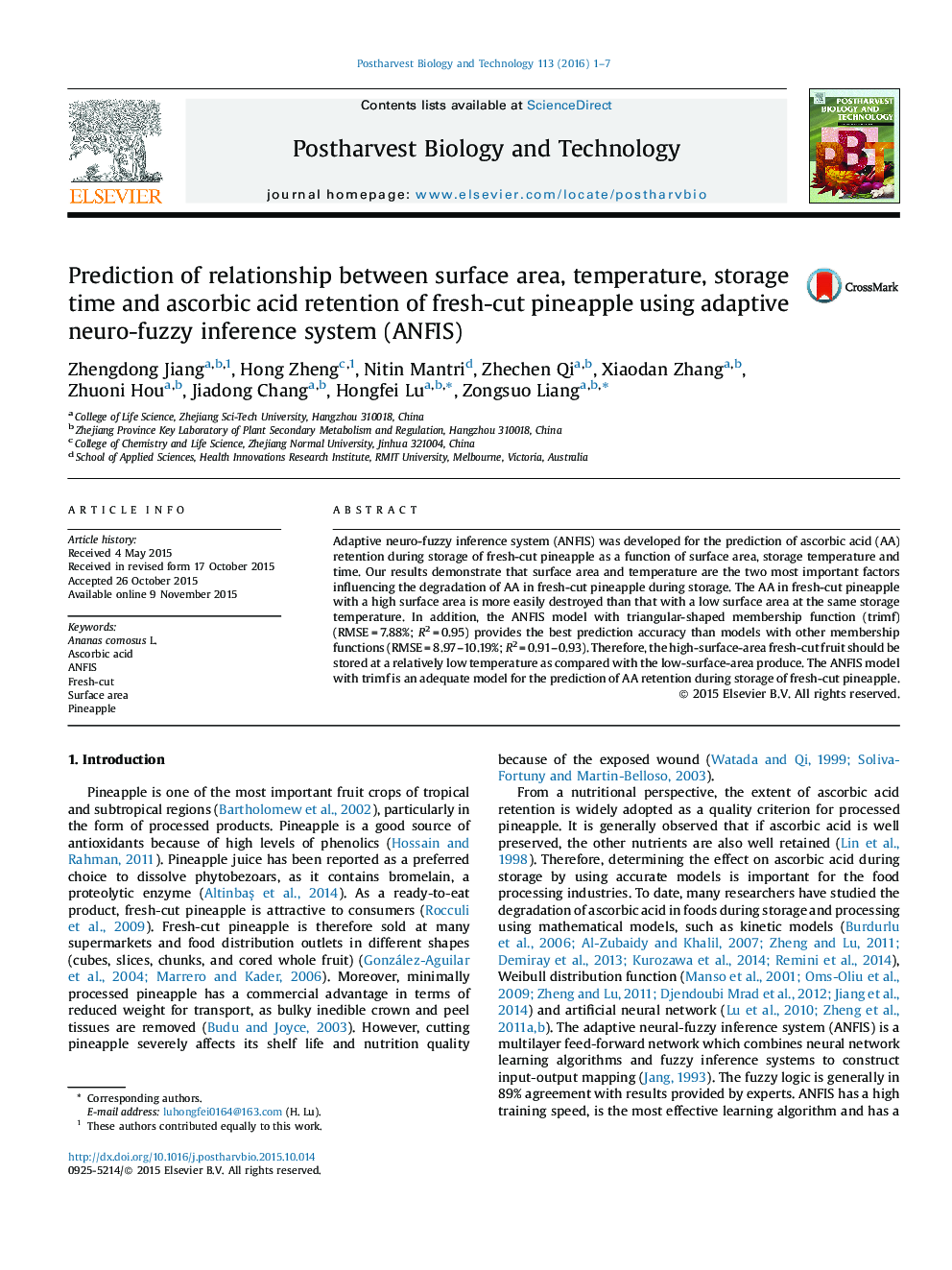| Article ID | Journal | Published Year | Pages | File Type |
|---|---|---|---|---|
| 4517829 | Postharvest Biology and Technology | 2016 | 7 Pages |
•Ascorbic acid (AA) retention during storage of fresh-cut pineapple was studied.•Adaptive neuro-fuzzy significantly inference system (ANFIS) model was applied in this study.•Surface area and temperature influence AA degradation during storage of fresh-cut pineapple.•ANFIS model with triangular-shaped membership function (trimf) provides best prediction.
Adaptive neuro-fuzzy inference system (ANFIS) was developed for the prediction of ascorbic acid (AA) retention during storage of fresh-cut pineapple as a function of surface area, storage temperature and time. Our results demonstrate that surface area and temperature are the two most important factors influencing the degradation of AA in fresh-cut pineapple during storage. The AA in fresh-cut pineapple with a high surface area is more easily destroyed than that with a low surface area at the same storage temperature. In addition, the ANFIS model with triangular-shaped membership function (trimf) (RMSE = 7.88%; R2 = 0.95) provides the best prediction accuracy than models with other membership functions (RMSE = 8.97–10.19%; R2 = 0.91–0.93). Therefore, the high-surface-area fresh-cut fruit should be stored at a relatively low temperature as compared with the low-surface-area produce. The ANFIS model with trimf is an adequate model for the prediction of AA retention during storage of fresh-cut pineapple.
